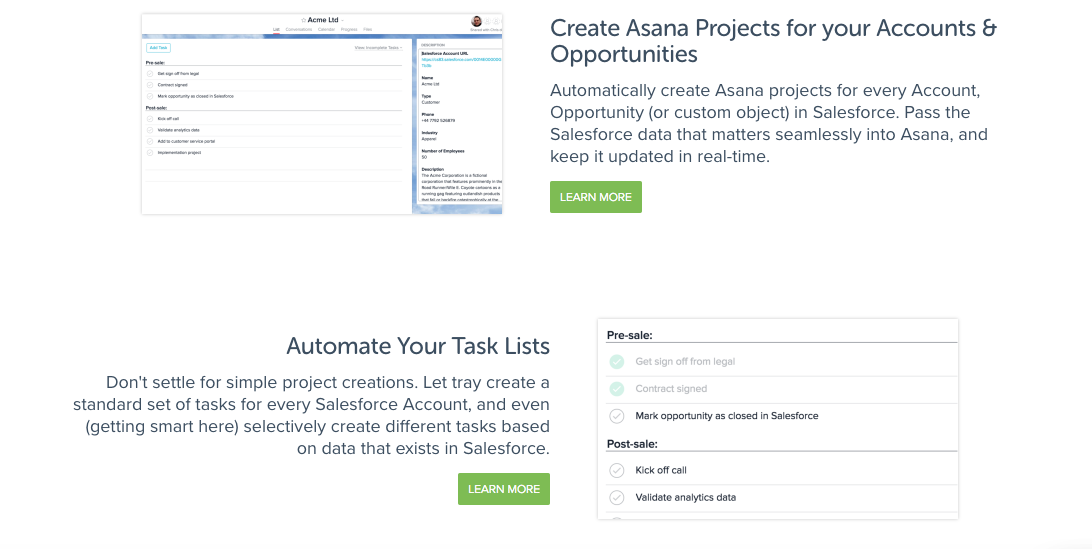Keep your team in sync by connecting Asana and Salesforce

To improve results, teams are focusing on ways to optimize their technology stacks. Hundreds of tools help drive engagement and close deals, yet no clear solution connects these tools to maintain a single source of truth. Not centralizing data collected across various tools makes it difficult to
- Track Progress: different departments use different metrics to gauge results
- Maintain Visibility: how can you identify issues when activities and other records are scattered?
- Ensure data integrity: relying on a manual process of pushing data across your tech. stack means more room for error and delays
A number of our customers rely on Salesforce, and prefer their CRM to house all business critical data. However, we also speak with folks who rely heavily on Asana: a task management tool enabling teams to work together effortlessly. Marketing initiatives can be shared and assigned across teams, while sales-critical tasks can be prioritized and completed.
Working across multiple tools, however, means customer data and internal activities are segmented across Salesforce and Asana. This makes it a challenge to clearly understand how teams are performing, which tasks were completed to close a deal, and what changes should be made.
Our Salesforce-Asana solution bridges this gap. Our bi-directional integration automates task management within Asana and ensures Salesforce records stay up-to-date. Powering actions in Salesforce to trigger projects and tasks within Asana makes both tools *smarter* and centralizes key data in one place. For example, you can now:
- Auto-create Asana tasks and projects each time records are created or updated in Salesforce
- Sync all Asana tasks back into Salesforce as logged “activities”

Say a sales opportunity is created in Salesforce. This action automatically triggers a project in Asana with a set of tasks for sales and support follow up. Those tasks, once completed, are then recorded at the opportunity level in Salesforce. Teams find this solution improves efficiency and makes it easier to measure performance across teams. It’s easy, it's flexible, and it’s powerful.
At Tray.io, we want your tools to work the way you want. To discover more ways you can use the Tray Platform to level up your project management tools, sign up for our next live group demo.
